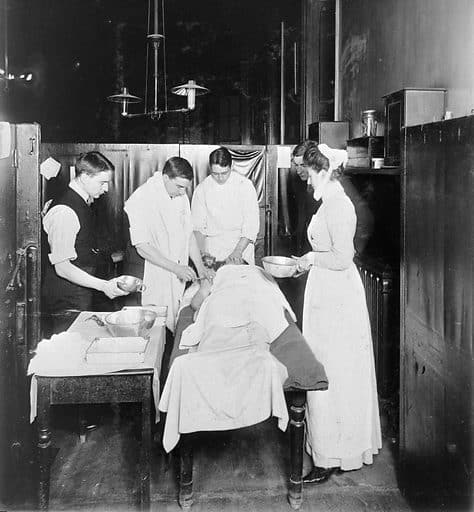Anesthetics are an integral part of medicine today and include a range of drugs used to simply manage pain or render patients completely unconscious. Propofol is the most commonly used anesthetic by doctors today, allowing for a relatively side-effect-free recovery after surgery, but this was not always the case.
manage the pain
Anesthesia as we know it is a relatively new invention historically, but we know from records that doctors have been looking for ways to soothe severe pain for centuries.
From Roman times to medieval times already, certain texts evoke a mixture made from a mixture of wild boar’s bile, opium, mandrake juice, hemlock and vinegar brought to the nose of patients to induce drowsiness in preparation for an operation. Note that opium and laudanum (opium dissolved in alcohol) would become common pain relievers in Europe from the 1600s.
Of course, all was not perfect. Indeed, the dosages were not adapted to the patients or their needs. In addition, some substances could be dangerous. While mandrake in high doses could cause hallucinations, cardiac arrhythmia and, in extreme cases, death, others like opium and laudanum could be addictive.
Thus, at those times, doctors having to perform invasive surgeries (much less numerous in those times) had to be as fast and precise as possible. “Go back more than 150 years and the operations had to be brief”, indeed explains to LiveScience Tony Wildsmith, former royal archivist at the Royal College of Anesthetists in the United Kingdom. “Efficiency and precision under time pressure have become a measure of a surgeon’s skill.”
Dubious methods
Throughout history, more unusual methods have also appeared. One of them, which dates back to ancient Greece, was the compression of the arteries, and in particular the carotid, to render someone unconscious. Others also compressed the nerves in an attempt to cause sudden numbness in the limbs. According to the Royal College of Anesthetists, in 1784, the Briton John Hunter notably amputated a limb without pain thanks to this method.
Another much more dubious pain management technique was “mesmerism”. This pseudoscientific belief combined elements of hypnosis with theories that each of us had a force field in the form of a fluid that could be manipulated with magnets. Austrian physician Franz Anton Mesmer, the originator of the technique, believed he could place patients in a state of unconsciousness by controlling this malleable fluid.
These practices grew in popularity in Europe and India until the mid-1800s, before eventually being discredited in favor of new, more promising candidates for pain relief and sedation.
From pseudoscience to the basics of modern anesthesia
Beginning in the mid-1800s, scientists and surgeons became increasingly interested in ether, made by distilling ethanol with sulfuric acid. In 1846, an American dental surgeon named William Morton performed a public operation in which he painlessly removed a tumor from the neck of a patient “shot” with ether gas.
At the same time, other surgeons also proved that another compound called chloroform could also relieve pain during childbirth and other surgical procedures.
Both of these substances have allowed surgeons to manage their patients’ pain more effectively, allowing for longer and more careful surgeries. Neither gas is used in surgery anymore today, but ether and chloroform definitely laid the groundwork for the development of safer and more effective drugs that we can all benefit from today.



